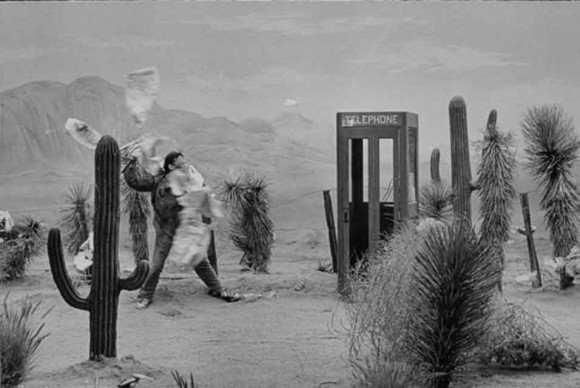Photographs from The Lost Album of the late Dennis Hopper on view at Gagosian Gallery
May 8, 2013 by All Art News
Filed under Photography
NEW YORK, NY.- Gagosian Gallery presents photographs from The Lost Album of the late Dennis Hopper. This historically significant body of work from the 1960s has not been exhibited in the United States since 1970.
Hopper established his reputation as a cult director with Easy Rider (1969), while maintaining his reputation as an edgy character actor with gritty performances in The American Friend (1977), Apocalypse Now (1979), Blue Velvet (1986), and Hoosiers (1986). Before his rise to Hollywood stardom, he captured the establishment-busting spirit of the 1960s in photographs that travel from Los Angeles to Harlem to Tijuana, and which portray iconic figures including Tina Turner, Andy Warhol, and Martin Luther King, Jr. The Lost Album in its entirety comprises over 400 black and white photographs taken between 1961—when his first wife Brooke Hayward gave him a Nikon camera for his birthday—and 1967. He would not make photographs again until the early 1980s.
Exhibited in its entirety, The Lost Album reveals casual portraits of artistic luminaries (Jasper Johns, Roy Lichtenstein, Robert Rauschenberg), leading actors (Jane Fonda, Paul Newman, John Wayne), and mythic musicians (James Brown, The Byrds, Jefferson Airplane), as well as stirring images of the Civil Rights Movement. There are also hippie gatherings, the Apollo 11 lunar landing, Mexican bullfights, and catchy advertisements for popular cars, soft drinks, and newspapers.

Dennis Hopper, Neil Young in Desert Shot, 1961-67. Gelatin-silver print mounted on board, 6 1/8 x 9 inches (15.6 x 22.9 cm). Photo: Courtesy Gagosian Gallery© Dennis Hopper, Courtesy of The Dennis Hopper Art Trust.
Hopper’s photographs, shot with a Nikon camera and a 28-millimeter lens, are uncropped and produced with available light. His preference for full-frame added to his candid approach, producing such poignant images as Beverly Renee on Bed, where the model’s intentional but awkward pose is underscored by the nonchalance of the setting, from the unmade bed to the dark upper reaches of the image. This and other photographs of women reveal more intimate, playful and voyeuristic aspects of Hopper’s gaze. In one of many photographs that he took of Hayward, she peers coquettishly from behind cat’s-eye sunglasses, wearing a crown with the price tag attached.
Hopper followed Martin Luther King, Jr. during the Selma-to-Montgomery marches of 1965, capturing the fervor of the national quest for civil rights, from King speaking into a cluster of microphones before a spellbound audience to young black men holding aloft American flags, embodying the hope that the stars and stripes would come to represent a nation of equals under the law. These images, together with the many other cultural events, iconic individuals, and intimate moments that caught Hopper’s attention, constitute a panoramic view of the sixties that combines political idealism and humanistic optimism with California cool.
Dennis Hopper was born in 1936 in Dodge City, Kansas, and died in Venice, California in 2010. His photographs are included in the permanent collections of The Metropolitan Museum of Art, The Museum of Modern Art, Los Angeles County Museum of Art, Museum of Contemporary Art, Los Angeles, and Carnegie Museum of Art, Pittsburgh. Major exhibitions include “Dennis Hopper: Black and White Photographs,” Fort Worth Art Center Museum, Texas (1970, traveled to the Corcoran Gallery of Art in Washington, D.C.); “Dennis Hopper: A Keen Eye; Artist, Photographer, Filmmaker,” Stedelijk Museum, Amsterdam (2001); “Dennis Hopper: A System of Moments,” Museum für angewandte Kunst, Vienna (2001); and “Dennis Hopper: Double Standard,” Museum of Contemporary Art, Los Angeles (2010). The Lost Album was originally exhibited at Martin Gropius Bau, Berlin in 2012.
